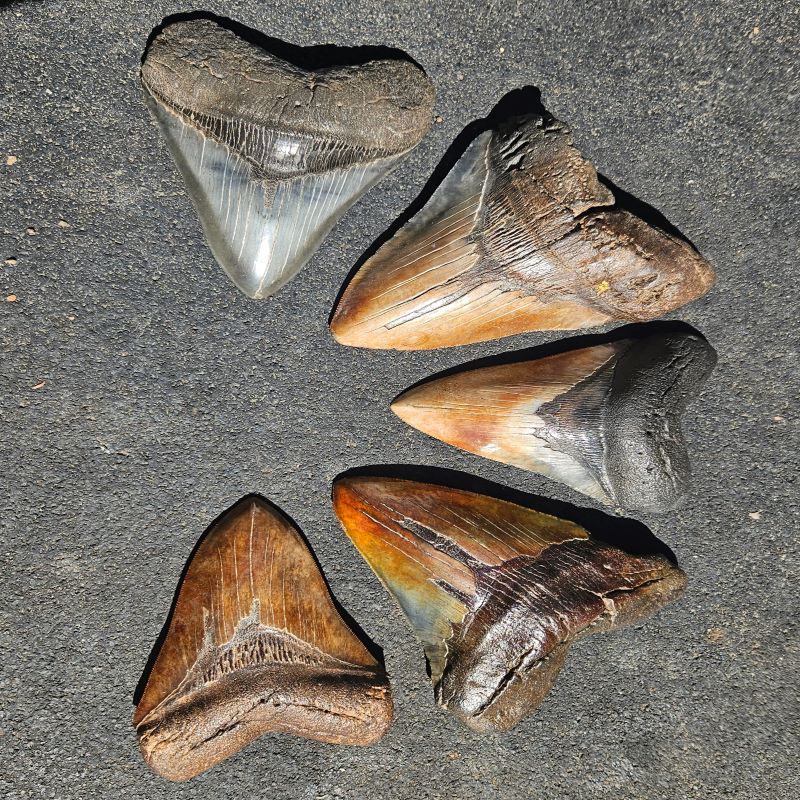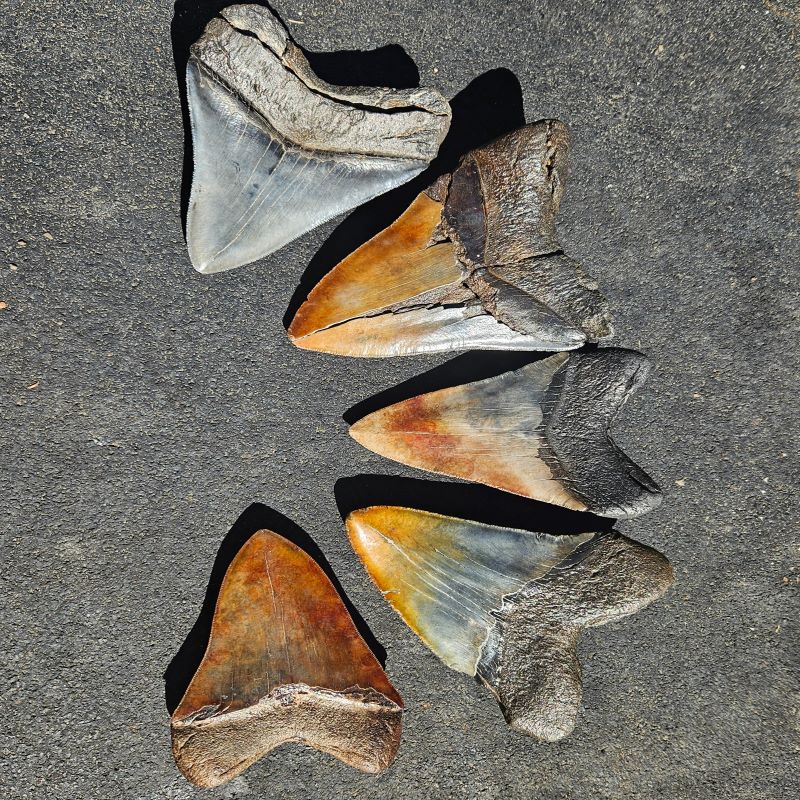Have a Question?
Why are Megalodon Shark Teeth so many different colors?


The Original color of these fossil shark teeth is gray from the Hawthorne Formation (ex: Megalodon shark Tooth on the far left). The Hawthorne Formation is generally light to dark-gray clay which was around in the Miocene /Pliocene Epoch approximately 2.5 to 5 million years ago. The Hawthorne Formation had excellent preservation conditions for fossilization
Above I have examples of 5 shark teeth that I found diving at the same location. This location was in brackish water. Brackish water is water occurring naturally that is being exchanged with more salinity than fresh water but not as much as seawater.
The three Megalodon shark teeth in the middle were teeth that were just coming out of the riverbank. These teeth were exposed to Tannin. As you can see these teeth have multiple colors. Tannin comes from decayed vegetation from plants, leaves, and bark. If you have ever seen a river that has a tea color this is a concentrated Tannin. Tannin eventually stains the tooth a varying brown to an orange or red color. The last tooth to the far right has been totally exposed to tannin as it is all red on both sides. How fast these teeth change color depends on the amount of tannin. Generally speaking, these teeth can change color from 3 months to a couple of years.
- Gray: Is from being mineralized in the Hawthorne formation which is a gray clay.
- Tan: Is from being mineralized in Sand
- Red: Usually from the early onset of Tannin
- If you have ever seen freshwater rivers that have tea-colored water this is usually caused by Tannin. Tannin is decayed leaves and bark. As the leaves decay in freshwater pockets on the bottom of these rivers the water becomes acidic, and the leaves deteriorate and leave an iron residue on the tooth.
- Brown: Brown teeth are usually from being in Tannin and tree leaves too long. Iron deposits build up from leaf decay trapped in pockets along the bottom. The iron starts building up on the teeth. Sometimes the iron coating can get very thick and is not removable as the iron has bonded to the tooth.
- White: White color teeth are usually from being replaced by calcium carbonate sediment (broken down seashells) A Great example of white color teeth is found in Summerville SC teeth. White teeth can also be caused by too much acid in Tannin (acidic burning). This would be in areas where the tooth is exposed on a flat bottom where the leaves don’t have a chance to accumulate. Such as tidal areas that remove the leaves stopping the accumulation of iron deposits.
- Orange: Orange is found in iron in a sandy-type sediment. Georgia red clay is a great example. You can also find iron-rich sand offshore in North Carolina.
- Black: Black teeth are usually caused by anaerobic bacteria or black mud.
- There are many other colors teeth come in: yellow, green, off-white, etc
Teeth have the ability to take on many other colors from the minerals they come in contact with.